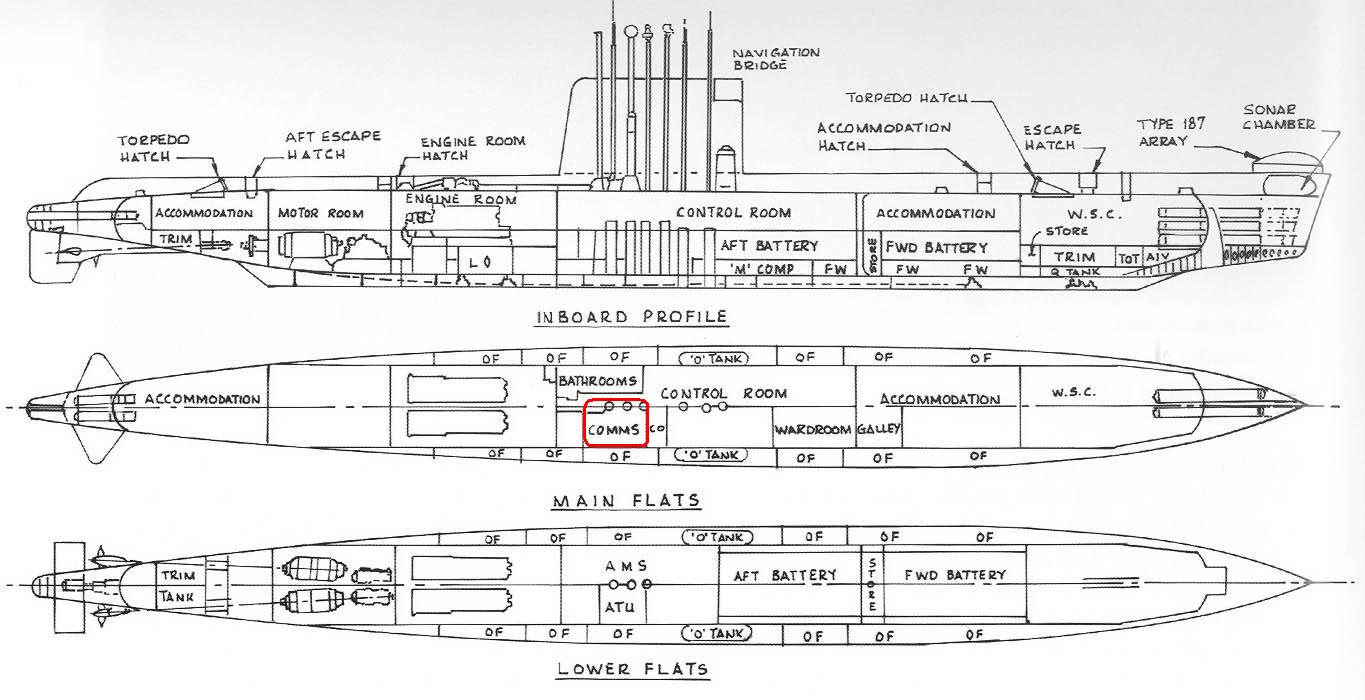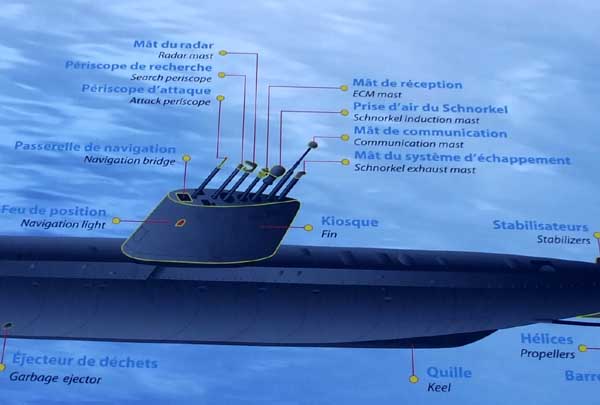Diagram view probably common to all Oberons once owned by Australia, Canada and of course, the UK. Click to enlarge (Courtesy of http://jproc.ca/rrp/index.html)
-
Canadian Oberon periscope/snorkel/radio masts - presumably Australia's were similar or the same. (Diagram courtesy of http://jproc.ca/rrp/rrp2/oberon.html)
-
Australia operated UK built Oberon Class submarines from 1970(?) to 2000(?) http://en.wikipedia.org/wiki/HMAS_Onslow which proved vastly more reliable and cost effective than their successors - the Collins Class.
Brendan Nicholson of Australia's Melbourne Age, September 8, 2006 reports http://www.theage.com.au/news/national/secret-spy-missions-forced-to-the-surface/2006/09/07/1157222265317.html :
-
"Secret [submarine] spy missions forced to the surface"
-
"AUSTRALIAN submarines carried out top secret Cold War spying missions on Russia and China that came to an abrupt end when a submarine was forced to surface in view of the foreign fleet after becoming entangled in fishing nets.
News of the inglorious end to 14 years of high-risk secret missions in 1992, and the fact that they even occurred, has emerged because the sailors involved want their missions officially designated "warlike operations".
Warlike or not, the missions carried out between 1978 and 1992 were certainly dangerous, with the Royal Australian Navy submarines occasionally sliding under or alongside potentially hostile ships. On one occasion, less than three metres separated the top of the periscope housing from the target ship's keel.
An RSL congress this year carried a motion calling on the Federal Government to recognise RAN submarine covert intelligence gathering missions conducted between March 1978 and December 1992 as prescribed warlike operations. That would increase the benefits available to the sailors and their dependants.
Veterans Affairs Minister Bruce Billson said yesterday he was aware of the submariners' claims and certain operations and activities would be re-examined. He said the process of reassessing these operations would take into account "the level of force authorised for use, enemy threat levels and environmental dangers".
In the latest issue of the RSL's newspaper, Reveille, associate editor John Gatfield says the full story can't be told because of security regulations and because the former submariners are reluctant to talk. He says they spied on Soviet and Chinese warships and Soviet-built ships of the Indian Navy, often lying quietly at periscope depth and watching and listening.
One mission was believed to have taken a submarine to the waters off Libya.
Mr Gatfield says that had an Australian submarine been sunk or captured, Australia would have been accused of a hostile act; the government may have been forced to resign. He says most of the crews would not have known where they were or what they were doing; as few as five key personnel may have been in on the secret, with the chart table often blocked off with a curtain.
The vessels' captains were ordered to stay out of foreign territorial waters, but they could seek permission to move in closer if they felt the risk was worth it. Mr Gatfield found no evidence submarines did so.
The spy missions were carried out by the Oberon-class submarines that have now been replaced by the Australian-built Collins-class. The Oberons were equipped with eavesdropping equipment that allowed them to listen to communications and record propeller "signatures" of foreign ships and examine their performance.
The first captain of HMAS Orion, Commander Rob Woolrych, says that submarine and HMAS Otama carried out 16 of these secret missions.
Only the prime ministers and defence ministers of the day, the chief of the Australian Defence Force and a limited number of defence personnel were cleared to know about the operations. The prime ministers were Malcolm Fraser, Bob Hawke and Paul Keating.
Robert Ray, now a Labor backbencher, was defence minister when one submarine, believed to be Otama, became tangled in nets in the South China Sea. Unable to get clear, the submarine surfaced and the crew cut the nets away. The Keating government stopped the riskiest operations.
Commander Woolrych says the submarines had no right of innocent passage as they aggressively pursued their objectives. The missions were co-ordinated by the Defence Signals Directorate.
The Libyan operation was carried out by HMAS Orion as it sailed for Australia in 1978 on its delivery voyage. Gatfield says the US and Britain asked Australia to send the submarine to monitor signals from Colonel Muammar Gaddafi's navy ships based in Tripoli, Benghazi, Darnah and Tobruk.
Other missions took RAN submarines into waters thousands of kilometres from home and dangerously close to potentially hostile ships. "The slightest misjudgement by the submarine's commander could have created an international incident or worse, a disaster for the Australian submarine and its crew of about 70," says Mr Gatfield."
-
Pete

